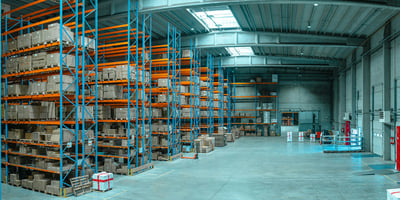At Alchemy, we spend a lot of time thinking about the other side of retail. The areas that, behind the scenes, keep operations running without a hitch.
For instance, we know that most retail supply chains are designed for moving products out rather than bringing them back in again. And we know that because of this, managing returns and excess stock can be something of a challenge. Unable to sell these products as new, retailers often don’t know what to do with them.
But with more of an emphasis on reverse logistics, there’s huge opportunity to be had in unsold and returned inventory. Not least in meeting the high level of expectation that today’s customers expect with their unwanted returns. And with years of experience designing smarter reverse logistics systems, Alchemy helps retailers recover value from returns while meeting customers’ changing expectations.
Why returns now matter more to customers
Convenience and transparency now define how shoppers judge their experiences. They expect returning a product to be as simple as buying one, with clear visibility of what happens next.
More and more, shoppers also want reassurance that unwanted items won’t be wasted but refurbished and resold, or recycled where possible. Reverse logistics is what makes that possible: a system that inspects, refreshes, and re‑routes every product so that nothing sits idle or ends up in landfill. When effective, goods keep moving and customers keep coming back.
In uncertain times, unpredictable consumer demand and tighter margins means reverse logistics has become a way for retailers to stay resilient. Returned devices or goods can be tested for defects, repaired, and resold through recommerce channels, or properly recycled so that valuable materials stay in use for longer. Each recovered item saves cost and carbon while boosting brand reputation among environmentally conscious customers.
Visibility, automation, and smarter timing
For reverse logistics to run smoothly, visibility is everything. Real‑time data reveals what’s being returned, why, and in what condition, helping retailers decide whether to repair, remarket, or recycle. When paired with automation, these insights speed up sorting and grading, stopping high value stock from sitting in limbo.
These systems are especially critical during peak shopping periods. Returns spike after seasonal events such as Black Friday and Christmas, and today’s customers expect the process to be fuss-free. By automating returns flow and preparing teams for inbound as well as outbound orders, retailers can turn seasonal pressure into a source of loyalty and recovered revenue, instead of a backlog.
Building a circular advantage
The arguments for investing in reverse logistics are clear. And ultimately, at Alchemy, we think forward and reverse logistics should reinforce, not replace, each other. Aligning the two strategies is where the real benefits multiply.
In practice that means thinking about areas such as strategic pricing, which allows refurbished or secondary products to complement each other rather than compete with new sales. Accurate grading and consistent quality checks are also crucial for building confidence in recommerce channels, creating trust in the secondary market and encouraging more sustainable choices from customers.
When businesses get this right, the financial and sustainable upsides are clear. Because if each returned item can be reintroduced into circulation quickly and at scale, revenue is recovered, waste reduced, and consumer trust secured.
Ready to turn your returns into revenue? Get in touch with the Alchemy team to find out how we can help.



